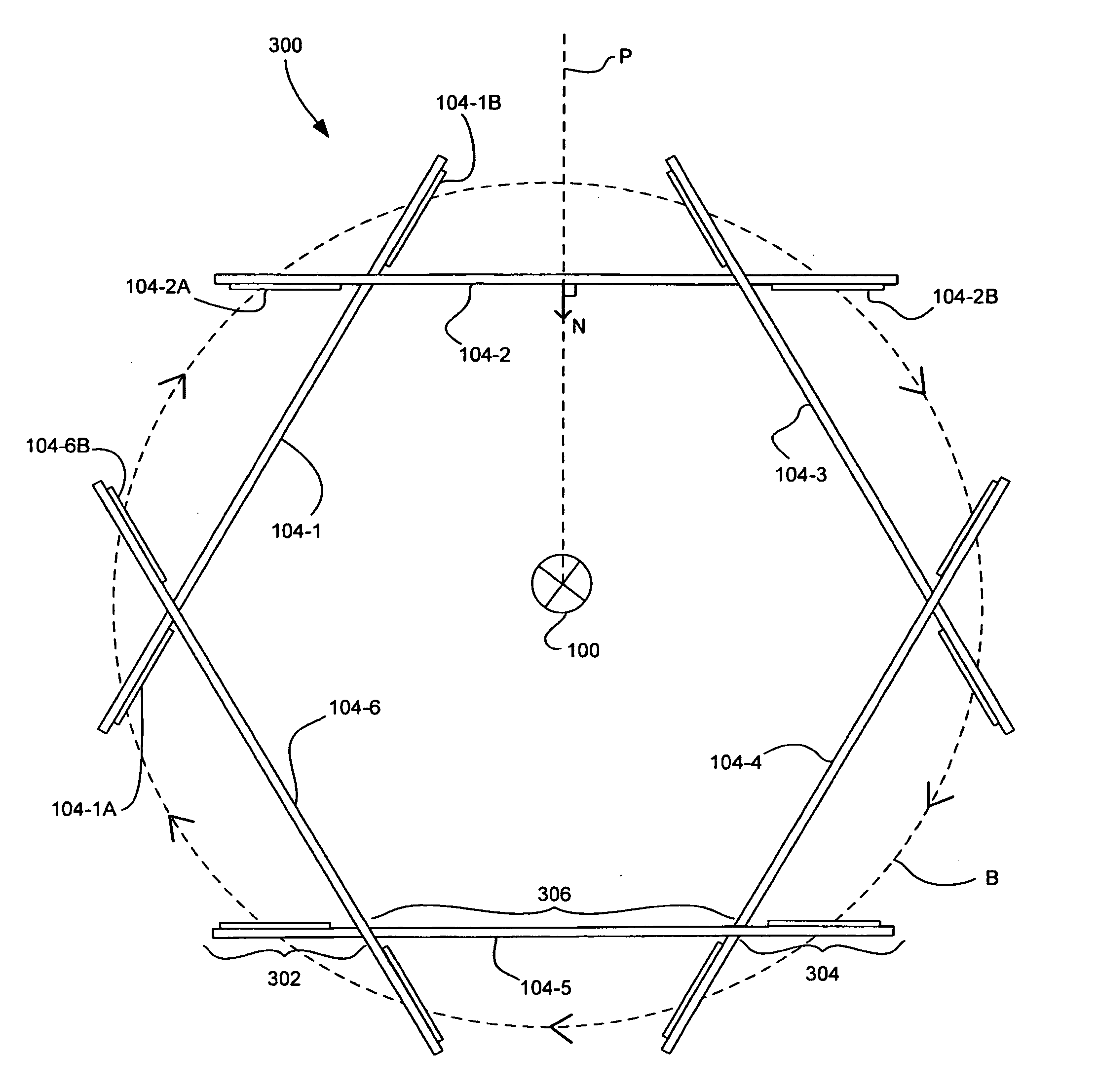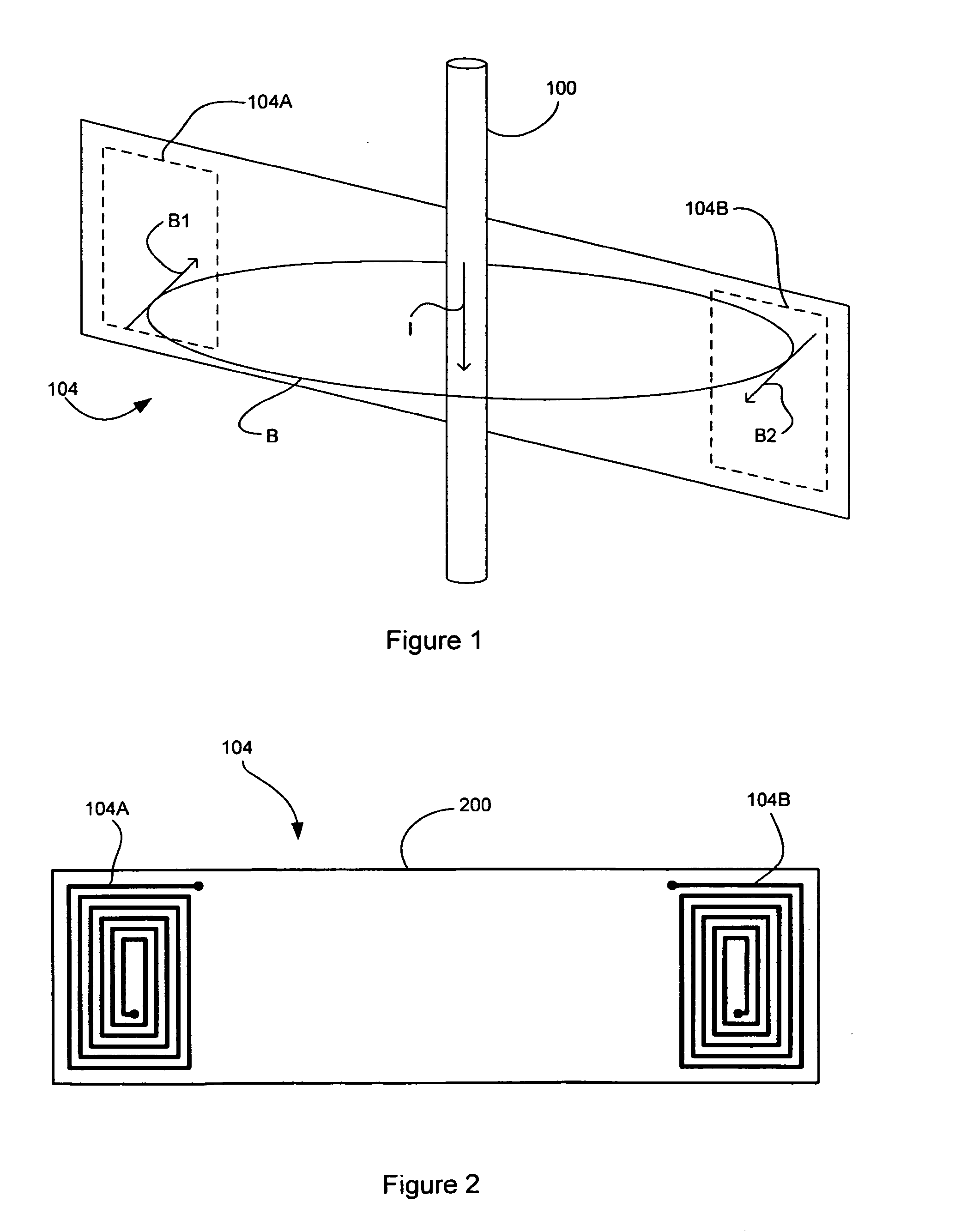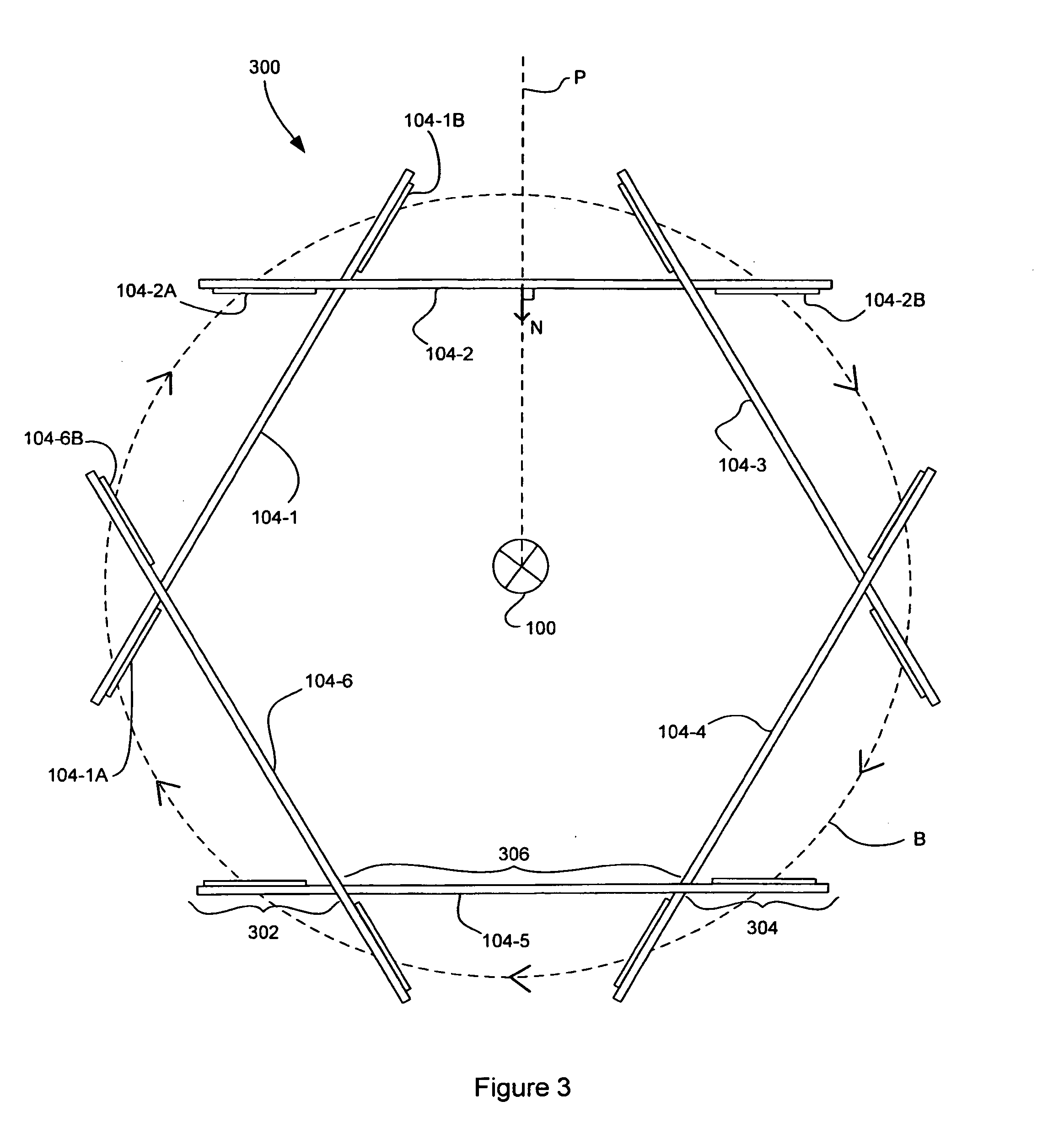Current sensor
a current sensor and sensor technology, applied in the field of sensors, can solve the problems of non-linear sensor response at low operating current, loss of accuracy of current sensor, etc., and achieve the effects of reducing manufacturing costs, simplifying construction, and reducing manufacturing costs
- Summary
- Abstract
- Description
- Claims
- Application Information
AI Technical Summary
Benefits of technology
Problems solved by technology
Method used
Image
Examples
Embodiment Construction
[0023]In the drawings and the below-described embodiments, like reference numerals refer to like elements.
[0024]FIG. 1 depicts a primary conductor 100, a circulating magnetic field B resulting from a current I flowing through the primary conductor 10 and a schematic view of a set of two oppositely-configured sensor elements 104 of which the invention is comprised.
[0025]In FIG. 1, a current is flowing through the primary conductor 100 in a downwards direction, as denoted by the arrow labelled I. Current moving through the primary conductor 100 results in a circular magnetic field loop B surrounding the primary conductor 100. The direction of the magnetic field at particular positions on the loop B are denoted by the arrows B1 and B2.
[0026]The sensor elements 104A, 104B of the set of sensor elements 104 are configured such that when a uniform field, such as due to a distant current carrying conductor (not shown), passes through the sensor elements 104A, 104B, equal and opposite signal...
PUM
 Login to View More
Login to View More Abstract
Description
Claims
Application Information
 Login to View More
Login to View More - R&D
- Intellectual Property
- Life Sciences
- Materials
- Tech Scout
- Unparalleled Data Quality
- Higher Quality Content
- 60% Fewer Hallucinations
Browse by: Latest US Patents, China's latest patents, Technical Efficacy Thesaurus, Application Domain, Technology Topic, Popular Technical Reports.
© 2025 PatSnap. All rights reserved.Legal|Privacy policy|Modern Slavery Act Transparency Statement|Sitemap|About US| Contact US: help@patsnap.com



